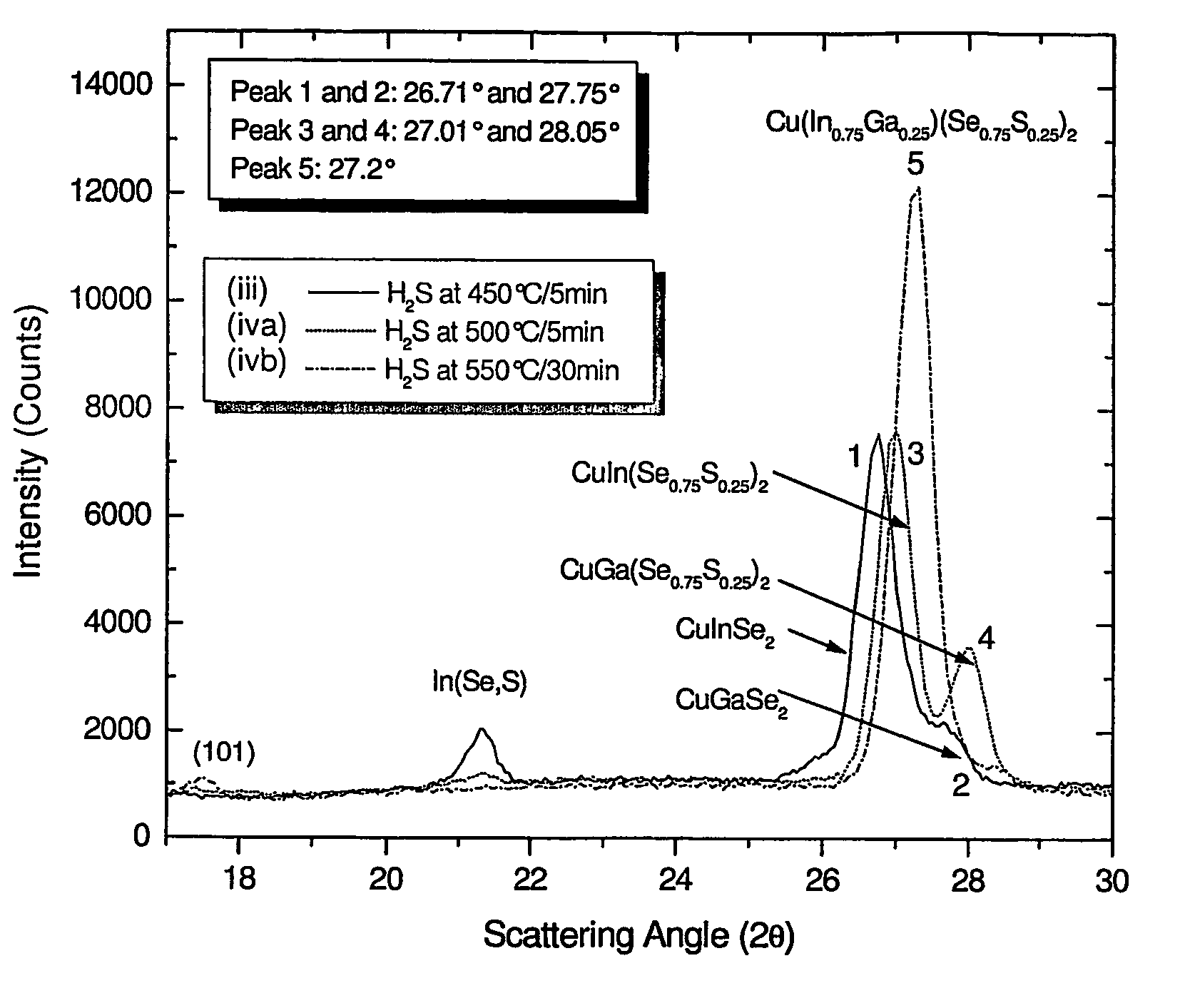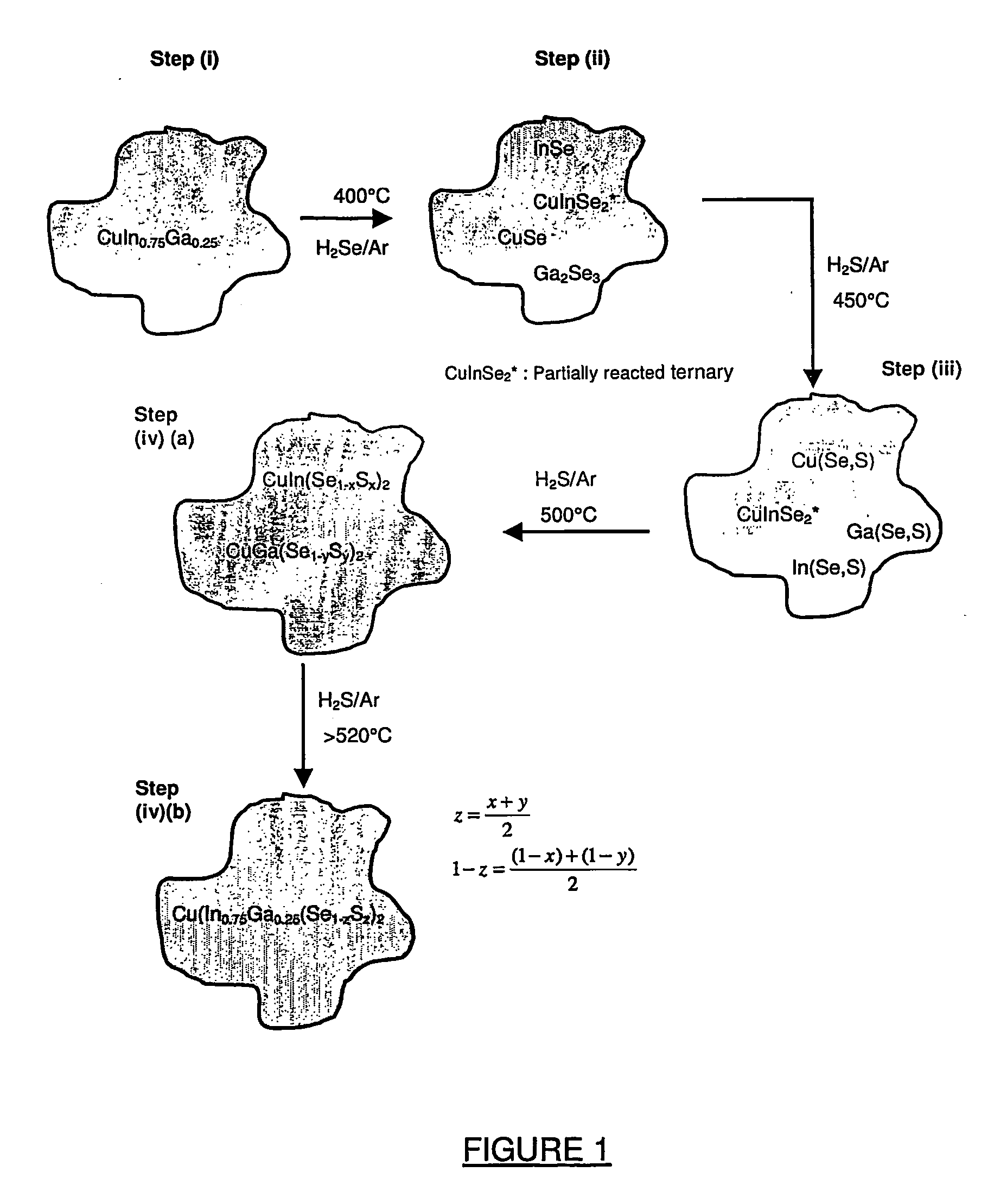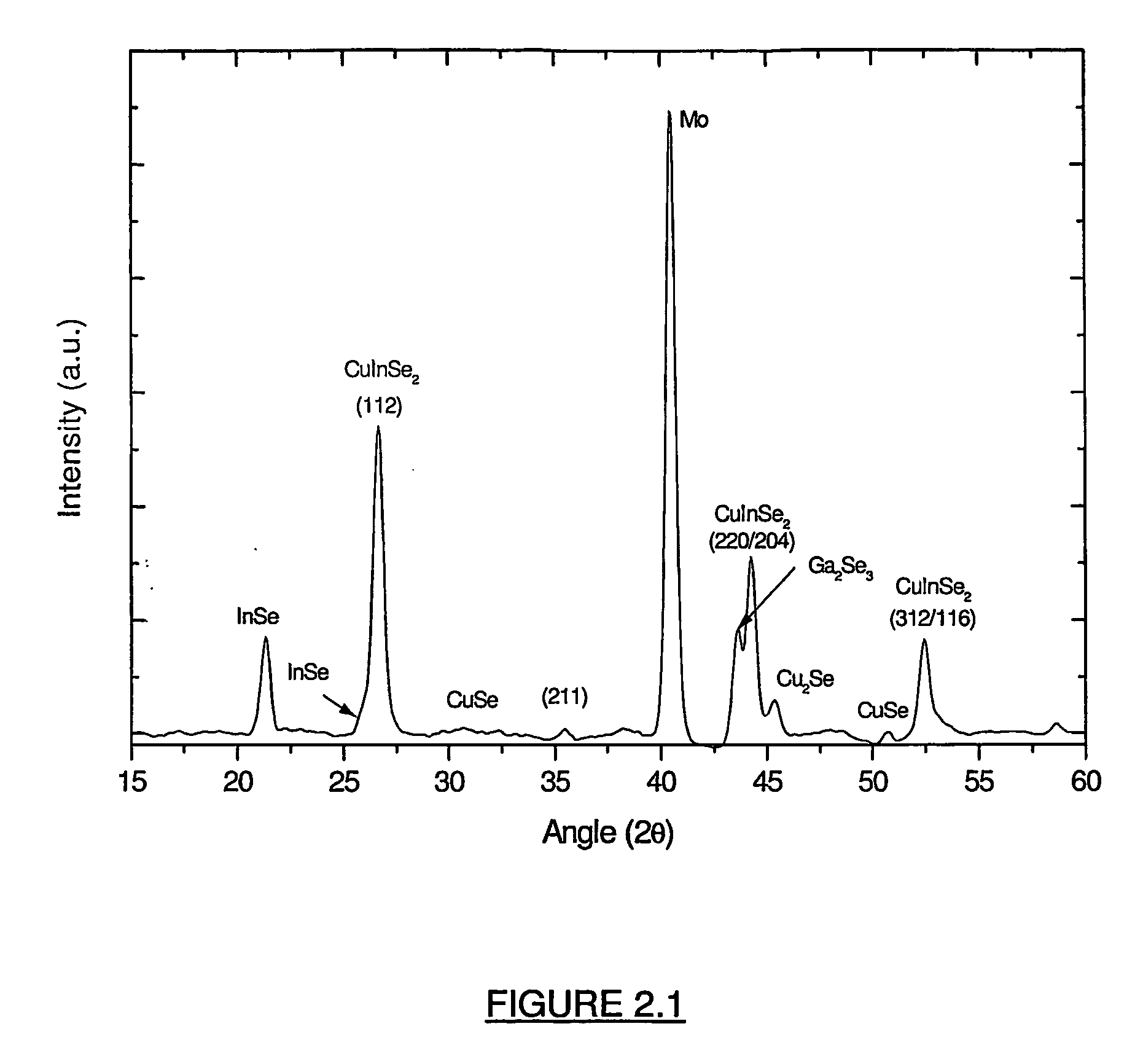Method for the preparation of group ib-iiia-via quaternary or higher alloy semiconductor films
a technology of quaternary or higher alloy semiconductor films and semiconductor films, which is applied in the direction of polycrystalline material growth, final product manufacturing, gel state, etc., can solve the problems of increasing the cost of production process, limiting the vsub>oc/sub> of the device, and negatively affecting the performance of the devi
- Summary
- Abstract
- Description
- Claims
- Application Information
AI Technical Summary
Benefits of technology
Problems solved by technology
Method used
Image
Examples
example 1
Experimental Procedure for the Production of a Group IB-IIIA-VIA Pentenary Alloy
[0191]FIG. 1 is a schematic representation of the method according to the invention for the production of a group IB-IIIA-VIA pentenary alloy semiconductor film.
Step i
[0192] Step (i) was followed as set out under the general experimental procedure. More particularly, the deposition of the Mo layer was followed, without breaking vacuum, by the co-sputtering of Cu0.75Ga0.25 and In at a working pressure of 0.3 Pa. The co-sputtering of the metals, Cu, In and Ga, was also carried out without intentional substrate heating and the substrate was rotated during co-sputtering in order to enhance the mixing of the Cu—Ga—In alloy. The total thickness of the Cu—In—Ga alloys was 0.6 μm and the Cu / (In+Ga) and Ga / (Ga+In) atomic ratios were maintained at 0.9 and 0.25 respectively.
Step ii
[0193] The substrate with the co-sputtered metal film of step i was placed in a horizontal quartz tube reactor (herein after refe...
example 2
Experimental Procedure for the Production of a Group IB-IIIA-VIA Quaternary Alloy
Step (i)
[0235] Step i is the same as set out under the general experimental procedure. More particularly, the deposition of the Mo layer was followed, without breaking vacuum, by the co-sputtering of Cu0.75Ga0.25 and In at a working pressure of 0.3 Pa. The co-sputtering was also carried out without intentional substrate heating and the substrate was rotated during co-sputtering in order to enhance the mixing of the Cu—Ga—In alloy. The total thickness of the Cu—In—Ga alloys was 0.6 μm and the Cu / (In+Ga)- and Ga / (Ga+In)- atomic ratios were maintained at 0.9 and 0.25 respectively.
Step ii
[0236] In this case the same method as set out in step ii of experiment 1 above was followed, however the reaction temperature was kept at 400° C. so as to form a first film comprising a stable mixture of binary alloys and CuInSe2 only.
[0237] It is believed by the inventor that in the case of the production of quater...
example 3
Experimental Procedure for the Production of a Group IB-IIIA-VIA Quaternary Alloy—Production of CuIn(Se1-ySy)2.
Step i
[0260] In this case, a metal film was prepared comprising only Cu and In, as opposed to the previous cases wherein Ga was also included. More specifically the metal precursors of Cu and In were co-sputtered onto a substrate using a Leybold Z650 DC Magnetron Sputtering System. The system accommodates three separate targets (i.e. Mo, Cu and In), and the substrate was rotated continuously during deposition in order to promote intermixing of Cu and In. The Mo back contact (about 1 μm thick) was sputtered from a 5N purity Mo target at a working pressures between 0.3 Pa to 0.7 Pa. The Mo film was cooled in vacuum to room temperature, followed by the co-sputtering of the Cu and In layers from 5N purity Cu and In targets. The total thickness of the copper-indium alloy was around 0.6 μm, and the desired Cu / In atomic ratio between 0.85-0.9 was achieved by keeping the Cu powe...
PUM
| Property | Measurement | Unit |
|---|---|---|
| temperature | aaaaa | aaaaa |
| temperature | aaaaa | aaaaa |
| temperatures | aaaaa | aaaaa |
Abstract
Description
Claims
Application Information
 Login to View More
Login to View More - R&D
- Intellectual Property
- Life Sciences
- Materials
- Tech Scout
- Unparalleled Data Quality
- Higher Quality Content
- 60% Fewer Hallucinations
Browse by: Latest US Patents, China's latest patents, Technical Efficacy Thesaurus, Application Domain, Technology Topic, Popular Technical Reports.
© 2025 PatSnap. All rights reserved.Legal|Privacy policy|Modern Slavery Act Transparency Statement|Sitemap|About US| Contact US: help@patsnap.com



